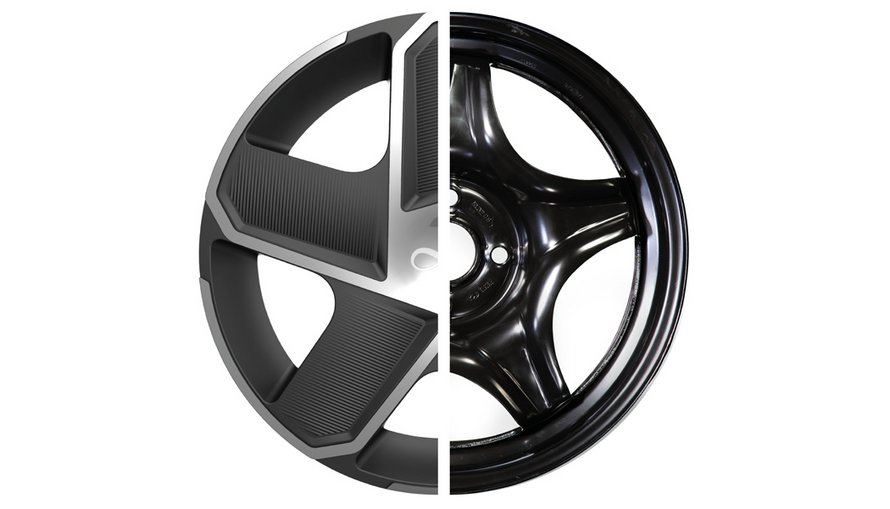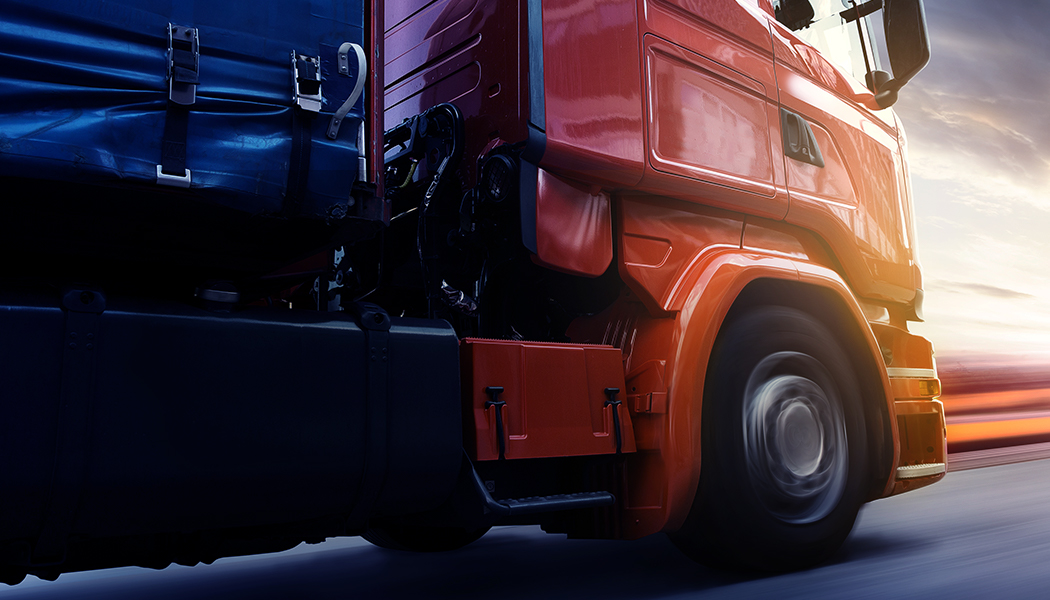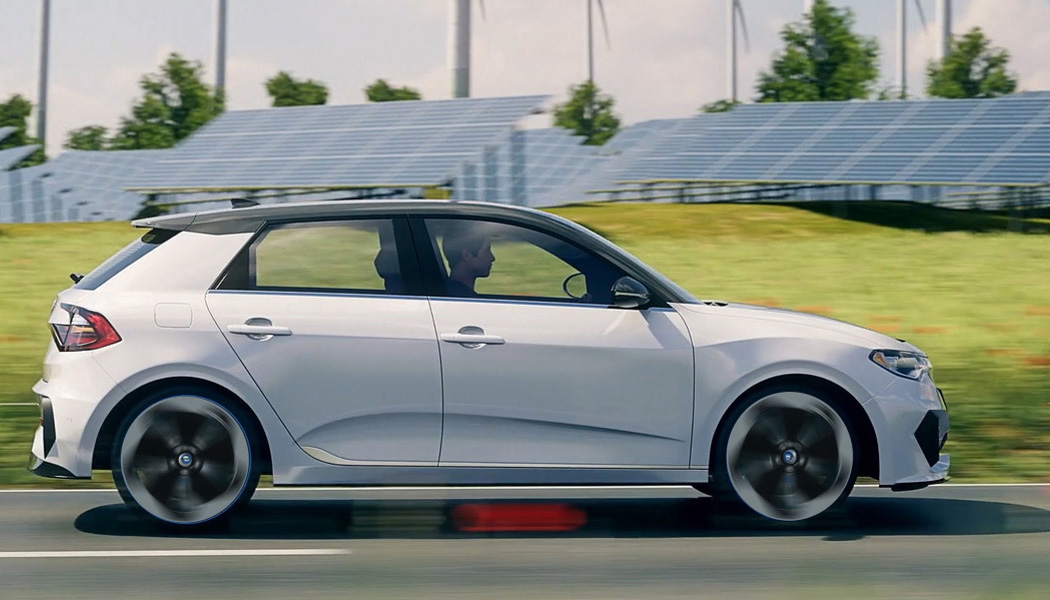
How New Mobility will change wheel design
Transforming wheel designs
Electric vehicles are the first, major step towards New Mobility in a process that aims to transform the automotive industry into a sustainable, intelligent mobility ecosystem. The process can appear gradual as infrastructure develops and new technologies enable start-ups to evolve into new business models. Some changes are much more dynamic and noticeable.
The advances in vehicle technology brought about are among the most eye-catching. As New Mobility replaces engines with battery power, silhouettes are adapting, and wheel designs are very different.
Maxion Wheels, a main wheel supplier for the electric car programs and last-mile fleets at the forefront of New Mobility, has been responding to these changes. With current Maxion programs putting millions of alternative powertrain vehicle wheels on the road, Maxion’s innovation work with start-ups and advanced R&D programs for global automakers gives its team early insight into how New Mobility will change wheel designs for good.
The new energy equation
The most fundamental change is the extra mass that electric mobility adds. The average new electric vehicle is around 25% heavier than its gasoline predecessor, and with the battery packaged in the floor, plus higher torque and acceleration, the physical demands on the wheels are significantly higher.
“Automakers are counting every gram to extend the distance between charging stops,” says Ralf Duning, Global Senior Commercial and Technical Advisor, Maxion Wheels. “A lot of our R&D and innovation work focuses on ways to meet the extra demands that New Mobility places on the wheels – as efficiently as possible.”
Aerodynamic wheels add range
Efficiency is the reason why EVs, and wheel designs, are prioritizing aerodynamics. Traditional aluminum alloy designs with thin spokes and large vents create unwelcome drag on the battery – wheels with large, clean surfaces help tame the turbulent air flow around the vehicle. Fitting aerodynamic wheels can add 3% to an EV’s maximum range.
For consumers who still favor thin-spoked styling options, Maxion helps designers camouflage the large surface areas with black-painted sections and bright-machined or diamond-cut spokes.
“Finding smart ways to balance weight, aerodynamics and styling is making wheel design more holistic,” says Mark Gerardts, CEO Maxion Wheels. “Some designers are now involved in exploring the way the wheel, tire and car body work together. We partner with them and tire companies on projects that look at these interactions, using our expertise and supercomputing capabilities to connect the details to the bigger picture.”
Stiffer wheels for quieter acoustics
One of the more subtle effects of electrification is the change in acoustic characteristics. With no background engine noise to mask them, previously inaudible road and tire noises are now more noticeable. Vibrations from the brakes when crawling in traffic are among the most common causes of concerned calls to dealerships from new EV drivers.
Increasing the stiffness of the wheels is one approach to address this issue. For steel wheels, the company is patenting an innovative rim profile that increases both stiffness and noise damping in the critical 150-200Hz range. For cast aluminum wheels, advances in the Maxion Lightweighting Process, an advanced utilization of simulation tools and process data, make fine-tuning the design, mechanical properties, and mass an integral part of the development and manufacturing process.
More data, less weight
“The connectivity and digital advances driving New Mobility are also unlocking the full potential of design and industrial processes,” says Esteban Remecz, Chief Information Officer, Maxion Wheels. “It takes a mix of big data, supercomputers, and human ingenuity to make a truly lightweight wheel and the Maxion Lightweighting Process is one of the most advanced in its field, capable of producing lighter high-performance EV wheels.”
"It takes a mix of big data, supercomputers, and human ingenuity to make a truly lightweight wheel."
With New Mobility switching the focus away from tailpipe emissions and onto the complete vehicle lifecycle, the Maxion Lightweighting Process will mean energy savings that benefit both the driver and the climate. The energy used to produce an aluminum alloy wheel can account for 9-12% of CO2 emissions in the wheel’s lifecycle.
Wheels made with greener materials, less energy and more efficient designs and processes are the future. To deliver this, Maxion is giving automakers sustainable wheel options made with green electricity, recycled raw materials and green materials produced using renewables.

Steel wheels cut CO2
The company is also developing next-generation steel wheels that offer significant sustainability benefits. “Steel wheel production is around six times more energy-efficient than aluminum,” says Duning. “If the industry is serious about reducing CO2, steel wheels have a role to play.”
For personal mobility, car design will always matter, and wheel design will continue to be a way of defining the look and character of vehicles. Wheels will remain an emotional choice for car buyers. For car sharing applications and fleets, the decision-making process is more rational, and the priorities are different.
“If the industry is serious about reducing CO2, steel wheels have a role to play.”
New mobility solutions offer an emerging generation of urban consumers an alternative to personal vehicle ownership, using connectivity and autonomy to maximize the productivity of shared concepts and last-mile deliveries. For these applications, efficiency, carbon reductions and cost will make steel wheels more compelling.
“We predict a growing interest in steel wheels among our customers as an innovative low-carbon alternative,” says Gerardts. “Designers are already exploring the possibilities that next-generation steel wheels could offer. Some automakers could combine them with full aerodynamic covers with more personalization opportunities.”
Consumer preferences are changing as digital experiences and a blend of subscription and on-demand services are replacing traditional ownership models. New electric vehicles already reflect these values with lease deals that include energy costs.
As New Mobility advances, usage cycles, technical requirements and the choices presented to consumers will evolve and car design will adapt. Wheel design and innovation is a small, yet essential, part of this transformation – and wheel advances will remain one of the most visible signs of progress.


